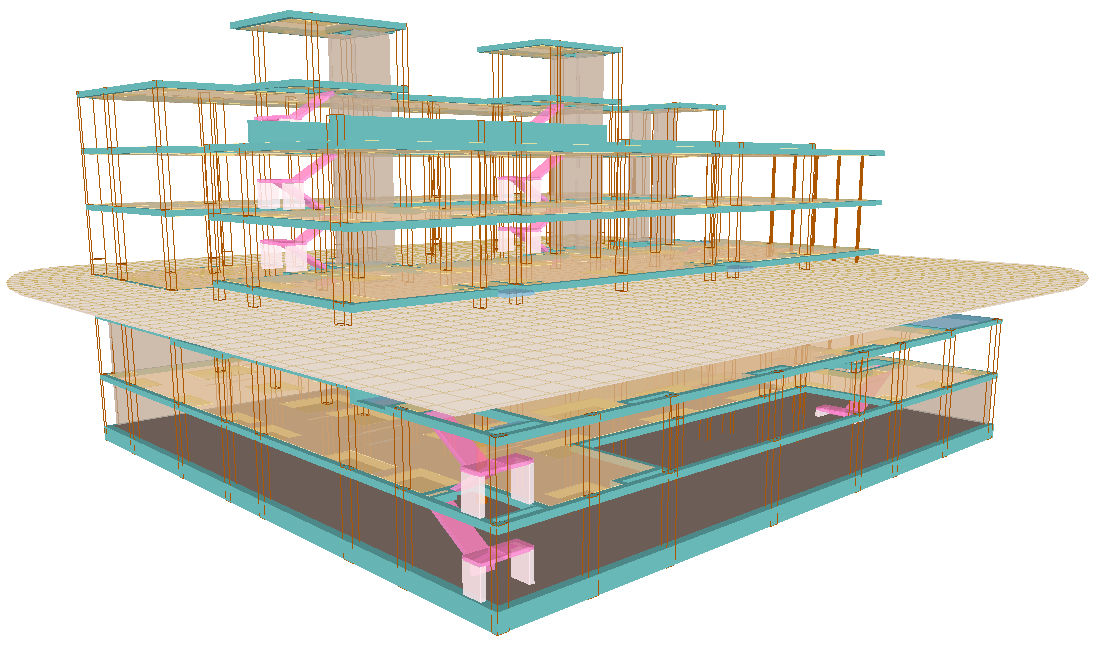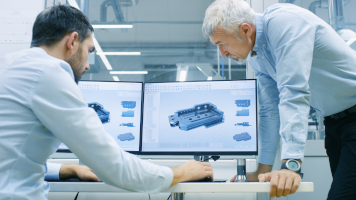Concrete Structures
Atreydes develops reinforced concrete projects in the environments of construction and industrial applications. Our wide experience and knowledge, supported by calculation software, offer our customers the best solution for their structural requirements, providing the documentation and drawings necessary for project executions.
We study your concrete project according to CTE (Technical building code) and under the current standards EHE-08 (Structural reinforced concrete instruction) and NCSE-02 (Earthquake resistant construction standard), if the site requires it. Calculation through other standards is also possible.

Concrete calculation software
Reinforced Concrete Performance
Concrete performance is similar to stone one in construction of Antiquity and Middle Age. This material, like stone, resists great compressive stresses but it is weak against tensile ones, since its internal structure separate in a brittle behavior. In order to withstand these tensile stresses, concrete is reinforced with steel bars (frames), arranged in the structural parts where these tensile strengths appear, although It can also help concrete in compressive areas.
The joining of these two materials, concrete for compressive stress and steel for tensile ones, makes that each constructive element must take into account the limitation of both, so many engineering diagrams and experimental results have become parts of standards and regulations to ensure the proper functioning of these structures.

Concrete normal stress diagram
Our Added Value
Our high added value offers the best solution for our customers, combining different technical areas, computer applications and technologies to optimize their final products.
Computer Aided Engineering simulations determine structural performances of elements in joints and complex geometries
Computational Fluid Dynamics simulations allow us to stablish the interaction between wind and our structure, identifying the wind exposure coefficients more accurately, optimizing the ones which standards indicate and minimizing structure costs
3D Printing provides a way to visualize smaller-scale structures at a low cost by means of mock-ups, consequently, a better idea of structure dimensions is materialized in order to make decisions in complex geometries.






